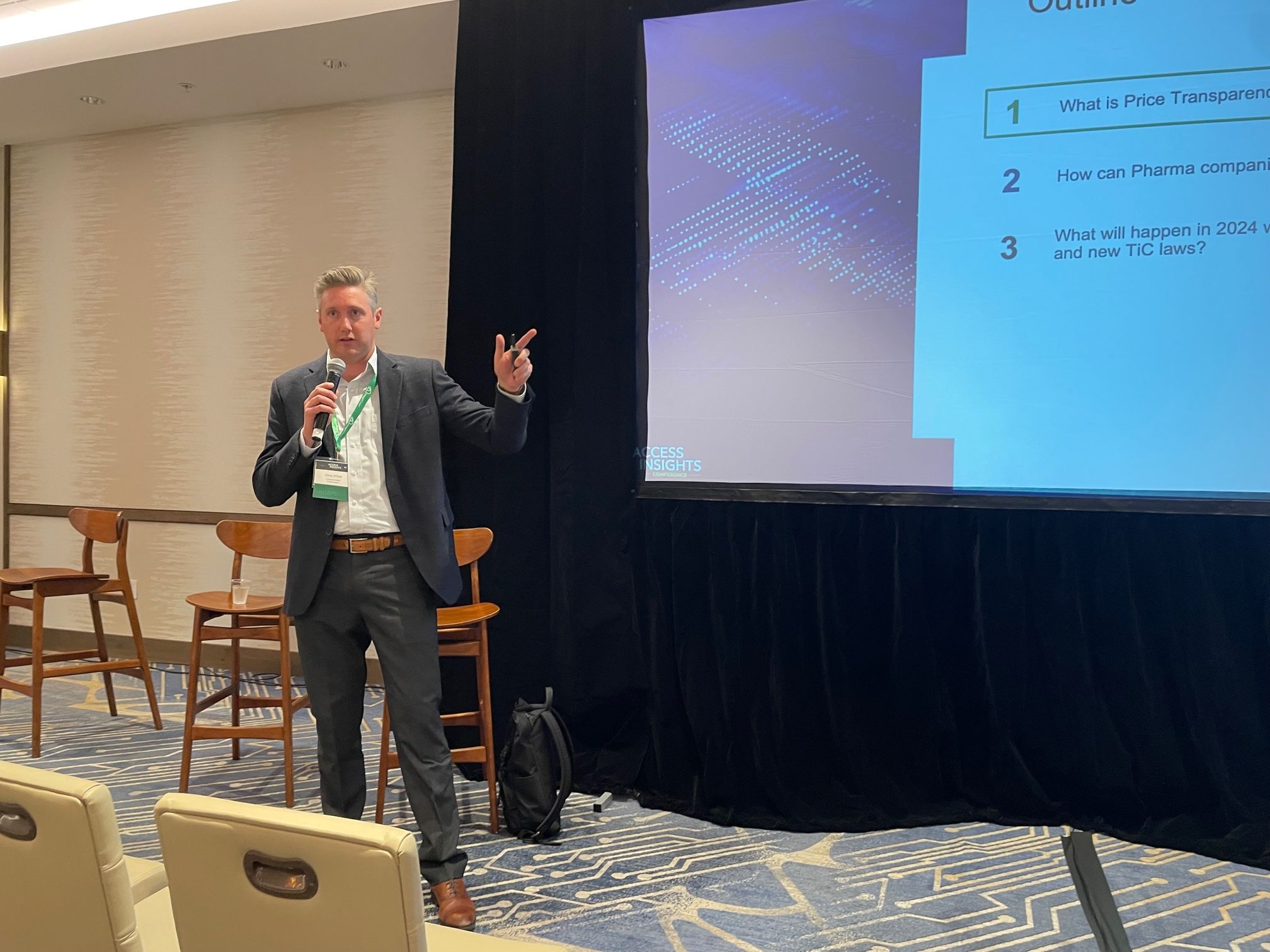Access Insights 2023: Price Transparency Data in Pharma
Session explains how to use this information to help bolster market intelligence, market access, and affordability strategies.

There is a “Transparency in Coverage” (TiC) rule that provides pharma companies with the ability to view contracted reimbursement rates between payers and providers for their products. In his “Strategies for Using the New Federally Mandated Price Transparency Data in Pharma” presentation at the Access Insights Conference, Chris O’Dell, VP of market access solutions for Turquoise Health, a price transparency software company, explains how companies can utilize this data.
O’Dell stressed the company's mission to simplify the healthcare financial experience. While their primary clients are payers and providers, there's a growing interest from life sciences companies in leveraging transparency data to understand contract data and optimize drug pricing strategies.
Price transparency stages and key definitions
The journey of price transparency data began with a Trump-era executive order, mandating the public disclosure of contract rates. Hospitals had to comply by January 2021, while payers faced a two-phase implementation in July 2022 and January 2023. Initially met with reluctance, the landscape transformed under the Biden Administration, reinforcing the regulations and intensifying penalties. This period of transformation marked a shift, with healthcare stakeholders, including pharma manufacturers, recognizing the need to harness this data for strategic decision-making.
Key to understanding the presentation, noted O’Dell, are some key terms: drug cost, drug reimbursement, and drug charge. Drug cost refers to the final cost a healthcare provider (HCP) incurs for a drug in a buy-and-bill setting. Drug charge represents the markup on the chargemaster, or charge description master (CDM). However, it's the drug reimbursement data that holds plenty of weight. This data provides insight into what payers pay HCPs for a specific drug on an account-specific basis.
Commercial negotiated rates are also now accessible through this data. Understanding variations in reimbursement rates across different providers and settings of care can be pivotal for pharma companies looking to optimize pricing strategies.
Two other terms, cost to charge ratio and net cost recovery, were introduced. The former highlights the markup from cost to drug charge, offering insights into pricing strategies employed by HCPs. The latter, represents the margin between cost and reimbursement, providing information regarding how much profit HCPs generate from drug acquisition.
TiC updates
O’Dell also mentioned that TiC was written with three machine-readable file (MRF) requirements:
- In-network rate file: includes rates for all covered items and services between the plan or issuer and in-network providers
- Allowed amount file: the allowed amounts for, and billed charges from, out-of network providers
- Prescription drugs file: the negotiated rate and historical net price
Reference
Strategies for Using the New Federally Mandated Price Transparency Data in Pharma. November 7, 2023. 2023 Access Insights Conference, Orlando.
Newsletter
Stay ahead in the life sciences industry with Pharmaceutical Commerce, the latest news, trends, and strategies in drug distribution, commercialization, and market access.
Multi-Indication Drug Branding in Today’s Pharmaceutical Industry
July 2nd 2025As drug development increasingly targets multiple indications, pharma companies must make strategic branding decisions—balancing regulatory requirements, market dynamics, and patient safety—to choose between single-brand or multi-brand approaches.